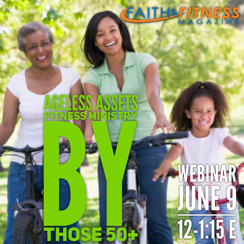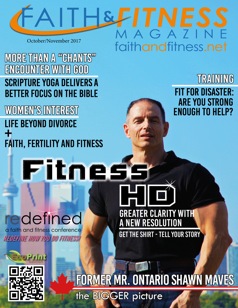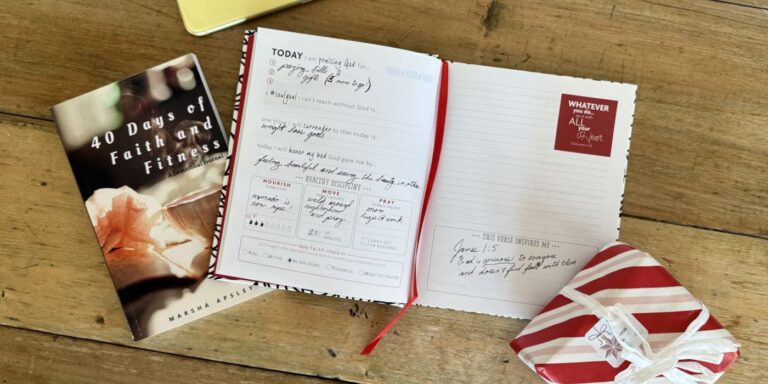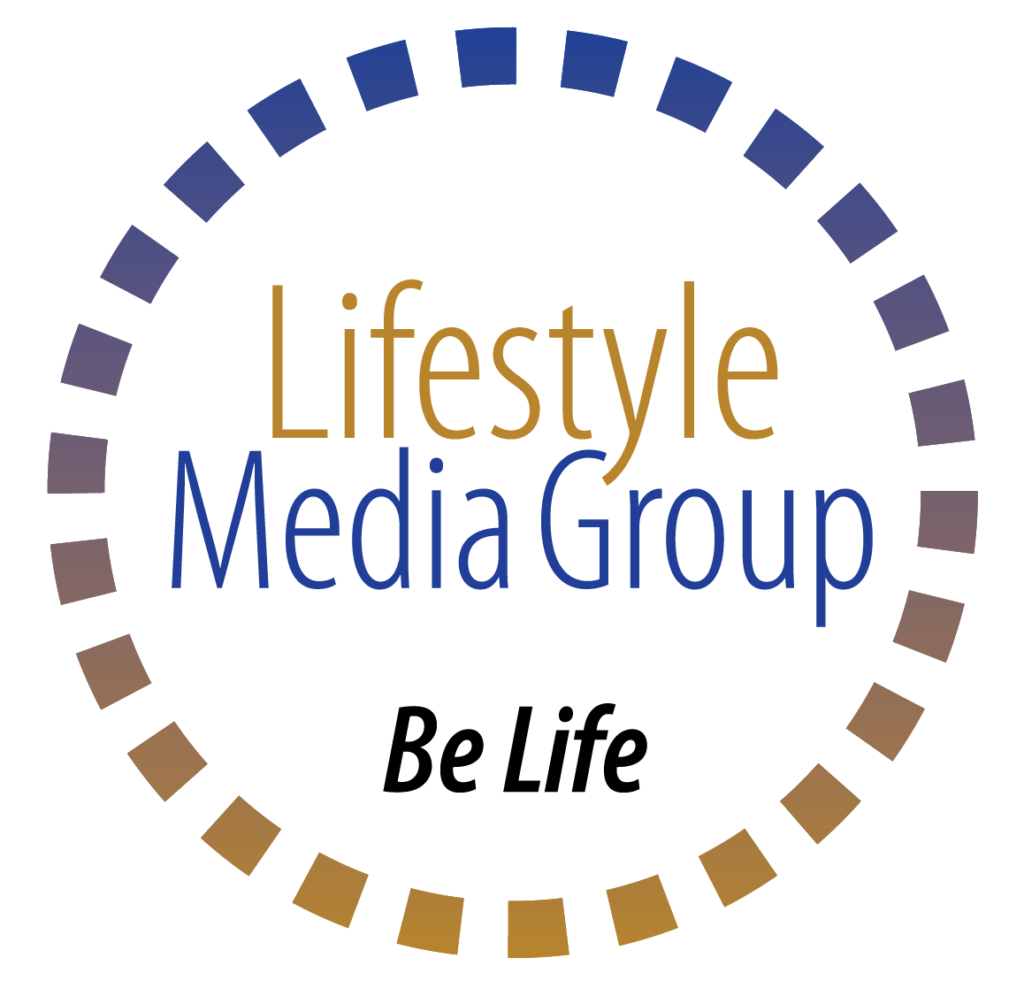By Heather Pennington, Co-Founder, LIFT Disability Network, Missouri
There is a market in the fitness culture that most businesses and churches are missing. What? As reported in 2013 by the Centers for Disease Control, one in five people in the United States have some sort of disabling condition. They not only COULD be members of your facility but, for their health, they really NEED to be a member. These conditions include diabetes, hypertension, cardiovascular conditions, neurological disabilities, Veterans with injuries, obesity, amputation, spinal cord injury, and many others.
Why aren’t these people at your gym or church? When asked, most of them identify two reasons: the facilities are lacking accommodations and they feel socially awkward. That’s why they aren’t getting a workout and getting fit. You can embrace and engage these individuals and open the doors of your fitness facility and fellowship community to them. You can make your fitness space and individual or group gathering accommodating to those with disabilities. It only takes a little bit of education, creativity, and flexibility.
Fitness professionals and church leaders have some awareness of the impact disabilities can have on health and lifestyles. To make a difference we all need to know how to make our facilities “accessible”. It is easier and can be more profitable than you think. Here are three simple ideas that can be applied in your facility immediately.
– Embrace an attitude of “accessibility”.
– Simply rearrange or shift facility equipment or space.
– Have Information to empower the staff.
Take time to consider and discuss how each one of these can be applied to your facility.
ACCESSIBILITY = IMPACT ABILITY
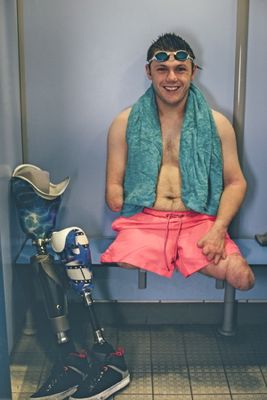 First, embracing an attitude of “accessibility” means being open to inviting people, asking what they need, and seeing them be successful with their goals as we help modify a few things. One thing that may need to be modified is your perspective. These individuals are not really “DISabled” — they are DIFFERENTLY abled. By design and by grace – we are all different. Once these individuals experience leadership and staff who believe in them and are willing to accommodate their needs, then the attitude of accessibility can mature in all members.
First, embracing an attitude of “accessibility” means being open to inviting people, asking what they need, and seeing them be successful with their goals as we help modify a few things. One thing that may need to be modified is your perspective. These individuals are not really “DISabled” — they are DIFFERENTLY abled. By design and by grace – we are all different. Once these individuals experience leadership and staff who believe in them and are willing to accommodate their needs, then the attitude of accessibility can mature in all members.
This accessibility attitude requires every person in the gym or church to get beyond simply making a commitment to accept others. The real opportunities lie in everyone having passion to fully believe in the success of those members who are disabled. That believing is active as members pursue along with the disabled, side-by-side their success . That is life impacting! They become engaged and involved. When everyone has buy-in then everyone benefits.
WE HAVE SPACE TO DO THIS
Simply rearranging or shifting facility equipment or space can support inclusion. Notice I didn’t say you’d have to invest thousands of dollars in ADA changes. You simply need to think flexibly.
These modifications could be as simple as moving one bike and treadmill enough to give access for a walker, scooter, wheelchair or other aid to fit. It may involve simply making enough room in front of a cable column for a person to maneuver with a mobility device. A few other tips for facility accessibility could include:
– Offer modifications like a basic sturdy chair for disabled members to use for an exercise class with modified exercises.
– Make pathways through the facility that provide a bit more room, making functional equipment like dumbbells, medicine balls, bands easily reachable for someone of any height. It doesn’t take much but a little rearranging in this area goes a long way!
INFO INSTEAD OF I DON’T KNOW
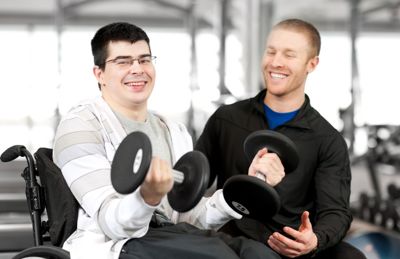 Provide information to empower the staff. We can add education and information to empower our staff to handle the idea of different populations that need our professional help and ministry care. It’s relatively easy to invest time and resources into schooling and/or certifications.
Provide information to empower the staff. We can add education and information to empower our staff to handle the idea of different populations that need our professional help and ministry care. It’s relatively easy to invest time and resources into schooling and/or certifications.
Exercise is Medicine is a movement and a website that gives resources for exercise prescription, forms for networking with physicians, and much more. It is a good way to promote fitness staff and personal trainers as professionals so that physicians will “prescribe” exercise instead of immediately a pill to take.
Heather’s session at the 2017 national Redefined Conference co-located at the Athletic Business Show offers more insights, instruction and tips to help fitness professionals, ministry leaders and others with inclusion.
NCHPAD (National Center for Health Physical Activity and Disability) has a wide range of videos and other resources for fitness staff and centers to succeed in this under tapped market.
So, what are we waiting for? Common fears and unspoken barriers like “What if I am sued?” or “Why open up to a few different conditions because I can’t be all things to all people?”, can be overcome by using these three methods of accessibility. Have conversations with professionals who have been successful. Embrace this and learn so you can impact more people that really need health and wellness.
Those who are disabled are often told, “You can’t.” When my husband was first injured and became a quadriplegic, that is exactly what he was told, that he would “never do…” things he had previously done. When he joined the gym where I worked he was welcomed. He had a program designed for him. He started playing sports again, went back to college, started working, and more! It fueled success in all parts of his life. Something as simple as health and fitness was opened up to him regardless of him being a quadriplegic.
Be the voice that welcomes and says, “We believe in you, YOU CAN do this
When we see people with and without chronic diseases and disabilities work side by side with each other, we can work the word “inclusion” out of nuance and into reality. Let’s create a culture in our facilities of “Ability Thinkers”. You can make small changes that don’t cost a lot. By doing thiat you will GIVE the benefit of health and life to an unreached market (people group).
Resources: Centers For Disease Control, NCHPAD, Exercise Is Medicine
This article appears in the Leadership department of the October/November 2017 issue of Faith & Fitness Magazine.

